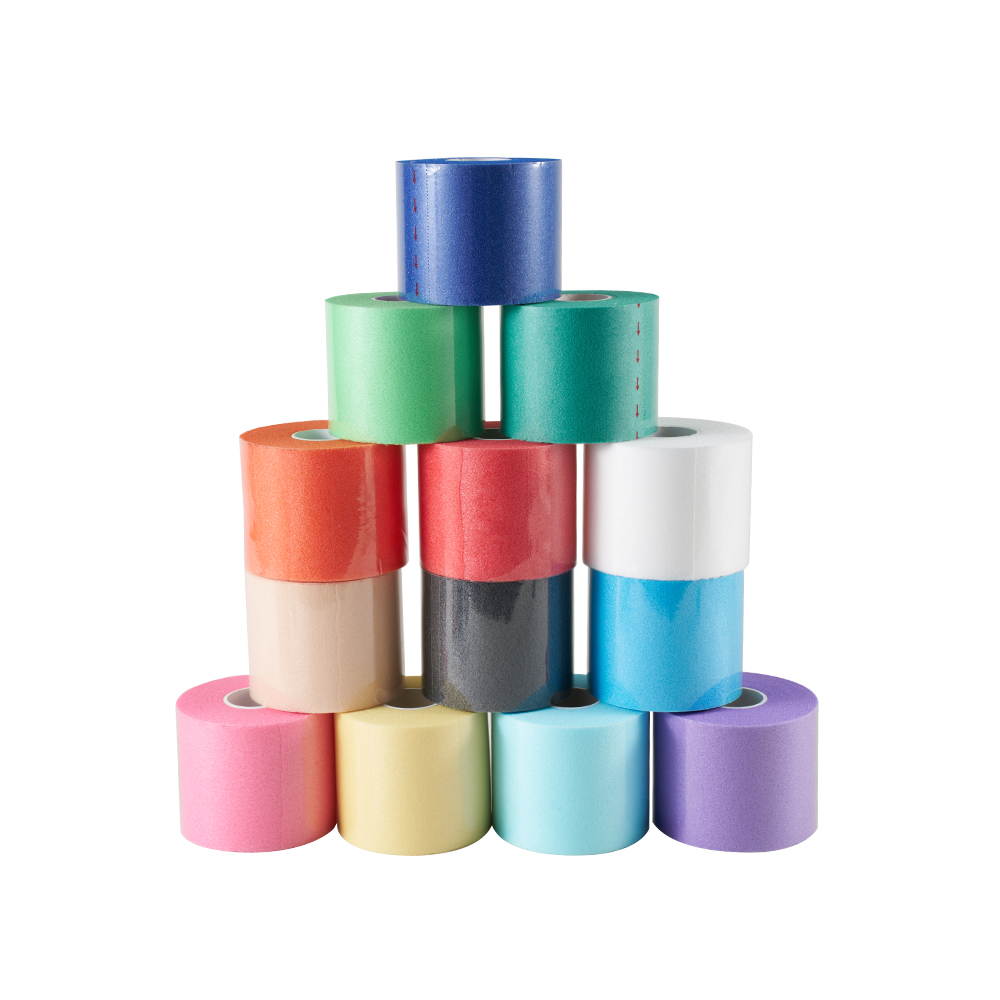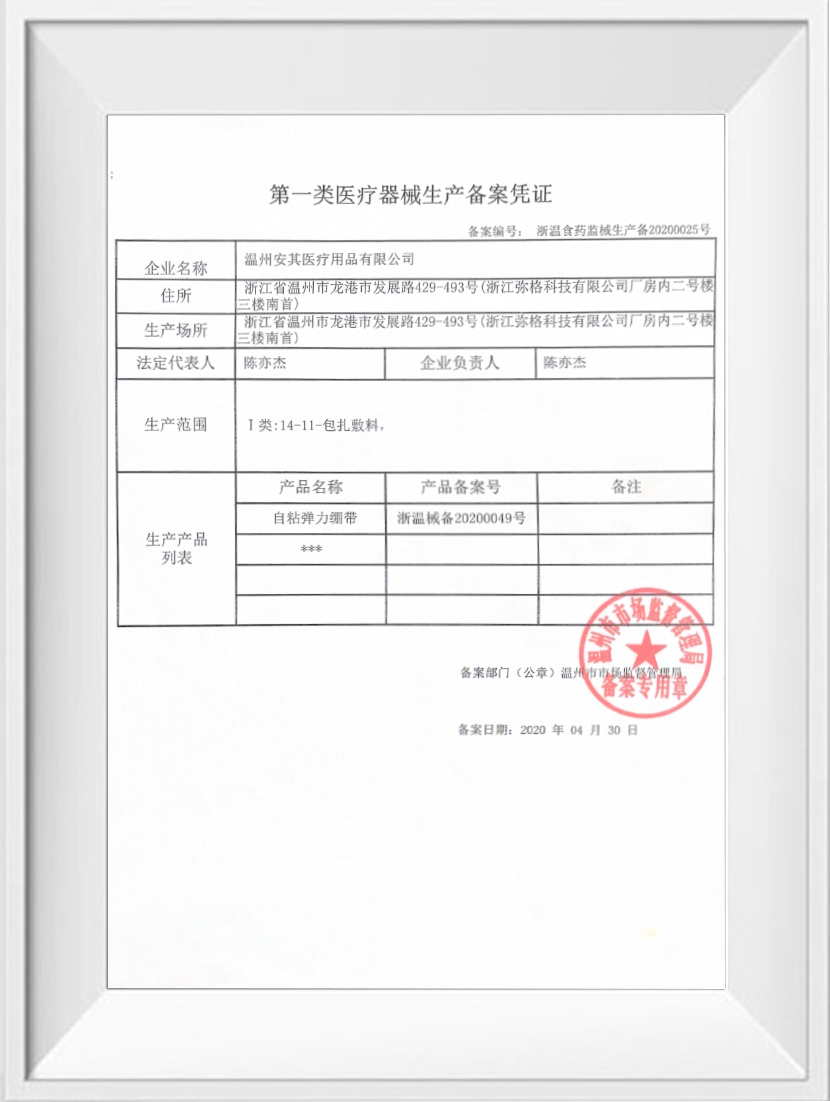Web Menu
Product Search
Exit Menu
We provide quality products and services to customers from all over the world.
Therapeutic tape for knee – fix knee pain behind the knee
Therapeutic taping, such as kinesiology tape, can be used to help alleviate pain and support the knee joint, including pain behind the knee. The term "behind the knee" can refer to the area at the back of the knee joint, which includes various tendons, ligaments, and muscles that can experience strain or injury.

Here are some ways therapeutic tape might be applied to help with knee pain behind the knee:
1. Support for Tendons: Tape can be applied to provide support to the tendons that run behind the knee, particularly the hamstring tendons and the popliteus tendon. This can help reduce strain and provide relief from tendinitis.
2. Reduction of Swelling: Taping can also help to reduce swelling by creating a compression effect, which can alleviate discomfort caused by inflammation.
3. Stabilization: By providing support to the knee joint, tape can help stabilize the knee and prevent excessive movement that may aggravate the pain.
4. Muscle Balancing: Taping can be used to assist in balancing the muscles around the knee, which can be particularly helpful if the pain is due to muscle imbalances.
5. Pain Relief: The tape can create a sensation of pressure on the skin, which can distract from the pain signals being sent to the brain, providing a form of sensory modulation.
6. Increase Range of Motion: In some cases, the tape can help increase the range of motion by supporting the joint and allowing for more comfortable movement.
It's important to note that while therapeutic taping can provide temporary relief and support, it is not a cure-all for knee pain. If you are experiencing persistent or severe pain behind the knee, it's crucial to consult with a healthcare professional, such as a physical therapist or sports medicine specialist. They can provide a comprehensive assessment, diagnose the underlying cause of the pain, and recommend an appropriate treatment plan that may include therapeutic taping, exercises, bracing, or other interventions.
Medical athletic tape has become a standard tool in sports medicine and rehabilitation due to its supportive and therapeutic functions. Whether used by professional athletes or individuals undergoing physical therapy, this type of tape provides several meaningful benefits during the injury recovery process.
One of the primary advantages of medical athletic tape is its ability to offer targeted support to injured muscles, joints, and ligaments. When properly applied, the tape helps limit excessive movement, reducing strain on damaged tissues. This can help prevent further injury while still allowing for a reasonable range of motion, which is especially useful during early stages of rehabilitation or return-to-play protocols.
Another important benefit is the improvement of proprioception, which refers to the body's sense of positioning and movement. Medical tape enhances this feedback mechanism, allowing individuals to better control and protect injured areas. This can be particularly valuable in recovering from sprains, strains, and ligament injuries, where joint stability might be temporarily compromised.
Additionally, many modern athletic tapes are designed to promote circulation and lymphatic drainage. Some therapeutic tapes gently lift the skin, creating small spaces that facilitate the movement of lymphatic fluid and reduce localized swelling or bruising. This effect can faster recovery by inflammation and discomfort.
Therapeutic kinesiology tape and adhesive sports bandages are both common tools in athletic training and physical rehabilitation, but they are designed with different purposes, materials, and application methods. Understanding the differences can help users make informed choices based on their specific needs.
Kinesiology tape is a flexible, elastic tape made of cotton with an acrylic adhesive. Its unique feature lies in its ability to stretch up to 140-180% of its original length, mimicking the elasticity of human skin. This tape is typically applied along muscles, tendons, or ligaments to support movement while still allowing for a full range of motion. Its primary purpose is therapeutic—promoting circulation, reducing swelling, and facilitating neuromuscular activation. Kinesiology tape is often used in recovery from muscle fatigue, postural issues, or soft tissue injuries. It can be worn continuously for several days, including during showers or physical activity, without losing adhesion.
In contrast, adhesive sports bandages (also called athletic tape or rigid tape) are non-elastic and more rigid. These tapes are used primarily for restricting joint movement, particularly in high-impact sports. Their purpose is often preventative or stabilizing, such as bracing an ankle after a sprain or securing a wrist during high-stress activity. Unlike kinesiology tape, they are not worn continuously and are typically removed after each training session or competition.
Another notable difference is the application technique. Kinesiology tape requires a more detailed understanding of muscle alignment and tension, while adhesive sports tape is usually applied in firm wraps or layers to create compression and immobilization.
Keep In Touch
No.455 New Town Development Road,Longgang City, Wenzhou City
Copyright © Wenzhou Anqi Medical Supplies Co., Ltd. All Rights Reserved.
Approval No: Zhejiang Wenzhou Food and Drug Administration Machinery Production Filing No. 20200025
The information provided on this website is intended for use only in countries and jurisdictions outside of the People's Republic of China.

 English
English русский
русский 中文简体
中文简体 Español
Español Deutsch
Deutsch عربى
عربى

